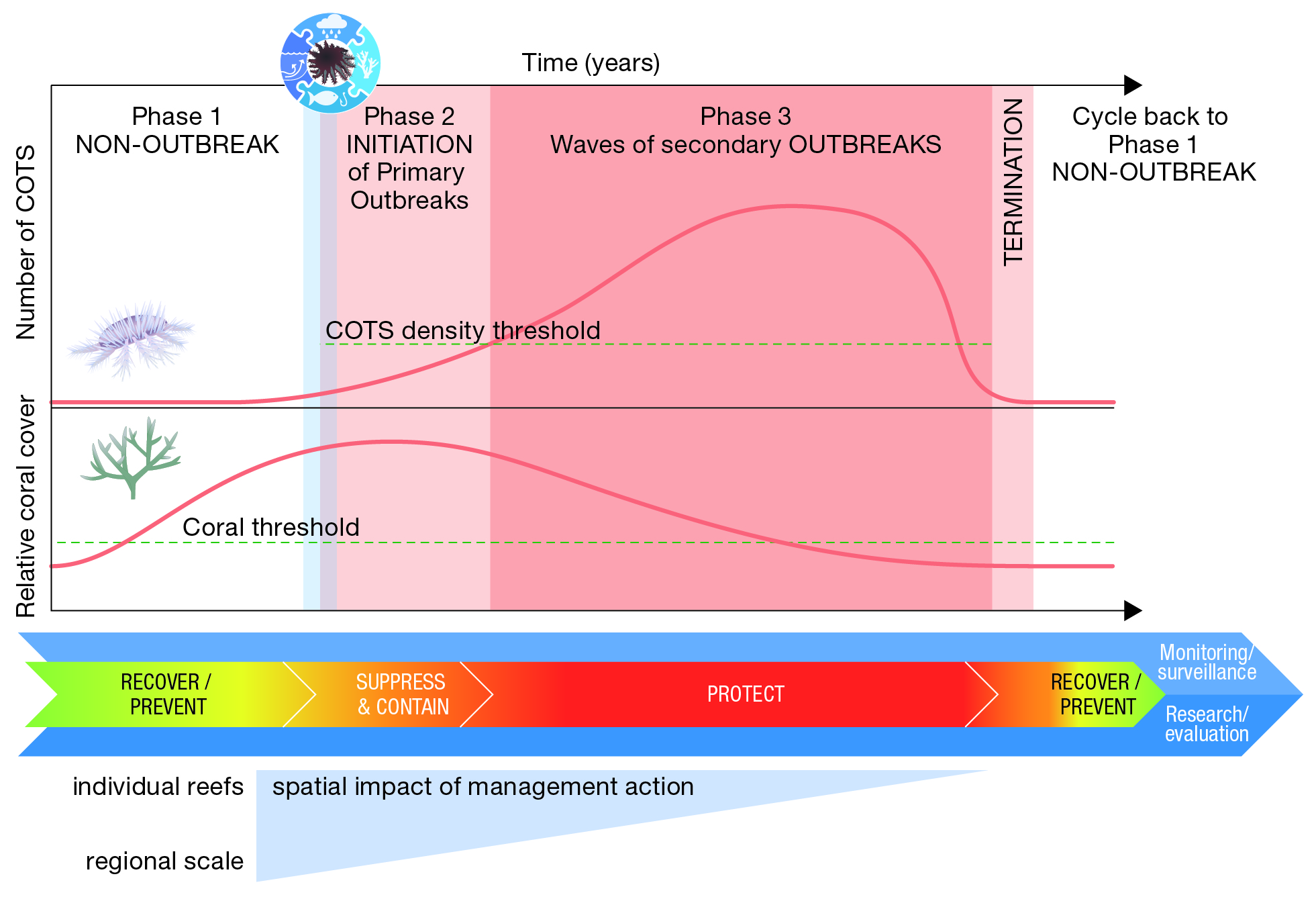Crown-of-thorns starfish pressure on the Great Barrier Reef World Heritage Area
Key Finding
Outbreaks of crown-of-thorns starfish are ongoing and causing coral decline on the Great Barrier Reef.
Outbreaks of crown-of-thorns starfish are seriously affecting ecosystem health and function on the Great Barrier Reef. As of 2019, outbreaks were most severe in the central and southern areas of the Reef.
Although a native coral predator, when crown-of-thorns starfish reach outbreak status (approximately 15 starfish per hectare), the consumption of coral tissue exceeds coral growth. Crown-of-thorns starfish outbreaks have 2 distinct phases – initiation of primary outbreaks and waves of secondary outbreaks — and can spread across the Great Barrier Reef over a period of at least 10–12 years.
Since the early 1960s, the Reef has experienced 4 destructive outbreaks. This frequency is unsustainable, particularly given other cumulative and broadscale pressures affecting the Reef.
The underlying causes of outbreaks are multifaceted with no single trigger categorically proven to initiate outbreaks. Nutrients in the water column from natural upwelling and land-based run-off, hydrodynamic conditions, coral availability and low abundance of predators of crown-of-thorns starfish may all combine to provide positive outbreak conditions on the Reef.
More information:
- Great Barrier Reef Outlook Report 2019, and references therein
Relevant Sustainable Development Goals’ targets
See also: Great Barrier Reef World Heritage assessment summary.
Metadata
Crown-of-thorns starfish pressure on the Great Barrier Reef World Heritage Area as reported in the Great Barrier Reef Outlook Report 2019.
Crown-of-thorns starfish outbreak cycle and the associated stages of management action
The goal of the Great Barrier Reef Marine Park Authority’s crown-of-thorns starfish control program is to protect coral from crown-of-thorns starfish predation by culling starfish to maintain numbers below ecologically sustainable levels for coral growth and recovery. Controlling outbreaks at a local scale is considered one of the most feasible management actions to reduce rates of coral mortality and enable the ecosystem to cope with other pressures.







